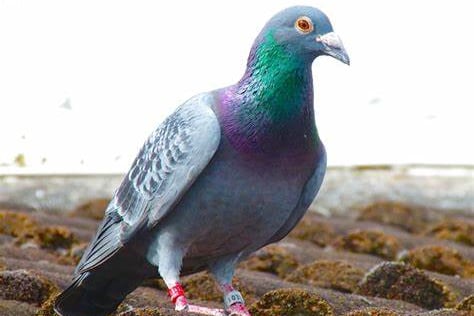We have received several notifications in the last few days about pigeons in people’s back gardens that are ‘hanging about’, seemingly reluctant to fly, with rings on their legs.
They are, of course, racing pigeons, otherwise known as homing pigeons, an amazing species trained to race over long distances.
These birds can travel hundreds of miles, reaching speeds of over 60 miles per hour, and find their way back to their lofts using the earth's magnetic fields and their keen sense of smell.
Several factors can cause a racing pigeon to make an unplanned stop. Bad weather, exhaustion, disorientation, or even an injury can force a pigeon to seek a safe place to rest.
These birds are highly trained athletes, but like any athlete, they can experience fatigue and setbacks. Sometimes their ‘pit stops’ can last up to 10 days.
So, what should you do if you find a racing pigeon in your garden?
Simply give the bird some fresh water in a dish, along with some bird seed, crushed cornflakes, or uncooked rice or lentils (but not bread, which has little nutritional value), and before too long it will resume its journey home.
However, if the bird doesn’t leave after several days, or it appears injured, you may be able to find the owner’s contact details on the ring on the bird’s leg.
At the very least there will be a registration number that you can then report to the Royal Pigeon Racing Association via their website www.rpra.org/stray-reporting. They can also be contacted on 01452 713529.
The best way to pick up a racing pigeon is to gently throw a towel over it, and then to place it in a ventilated box.
These birds are used to being handled and so should not be too stressed by human interaction, although handling should be kept to a minimum.
If the bird is visibly injured (possibly after an attack by a cat, or a bird of prey) you should take it straight to a vet who will give it emergency treatment free of charge, but please remember to phone ahead.
When contacted, most racing pigeon owners will ask that their birds be left to find their own way home.
A bird that doesn’t have a good racing record is not particularly valued by its owner who will view it as inferior stock. However, the RSPB reports that some racing pigeons can ‘go native’ and survive quite happily out in the wild.
Pigeon racing is a popular sport worldwide, with successful birds and their progeny selling for huge amounts of money.
The sport has its roots in Belgium, where the first long-distance races were held in the 19th century and where colombophiles (pigeon fanciers) were common.
The reputation of Belgium birds as the world’s finest is a consequence of many generations of selective breeding.
Belgium-bred birds command the highest prices, with Armando (a four-year-old male) selling at auction for 1.25 million euros in 2019, and then New Kim (a two-year-old female) trumping that price by selling for 1.6 million euros.
The biggest market for prize pigeons is China, and so it’s not surprising that both these birds were bought by Chinese bidders. Keeping homing pigeons has long been a tradition in China, but it was banned during the Cultural Revolution because of its association with capitalism. This has fuelled the current pigeon racing boom there, with some races attracting prize pots of millions of dollars.
And whilst we’re on the subject of homing pigeons, it’s worth remembering the role that these birds played in the First and Second World Wars when thousands of carrier pigeons, as they were known, relayed vital messages to and from the front lines.
Although the racing pigeon that lands in your back garden may not be a life saver, or a prize winner, it’s still an extraordinary bird that may need a helping hand to carry on with its journey.





Comments
This article has no comments yet. Be the first to leave a comment.